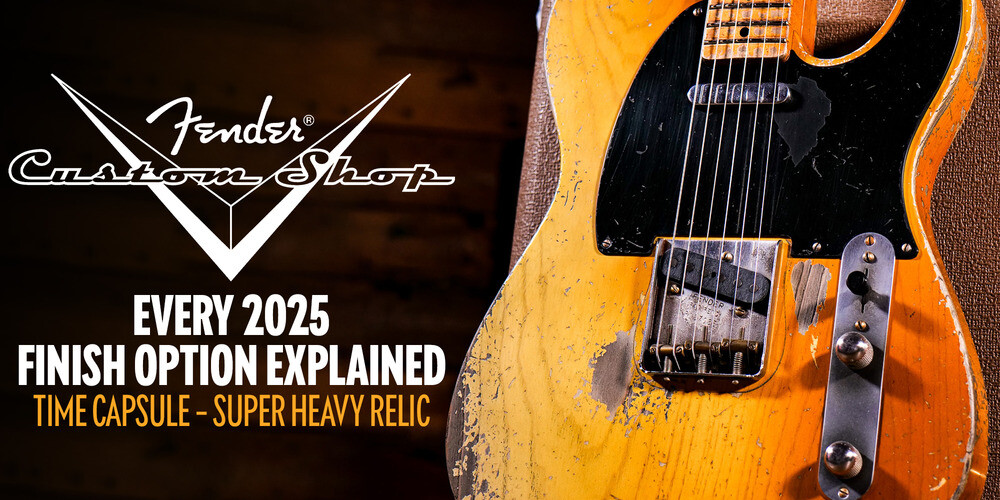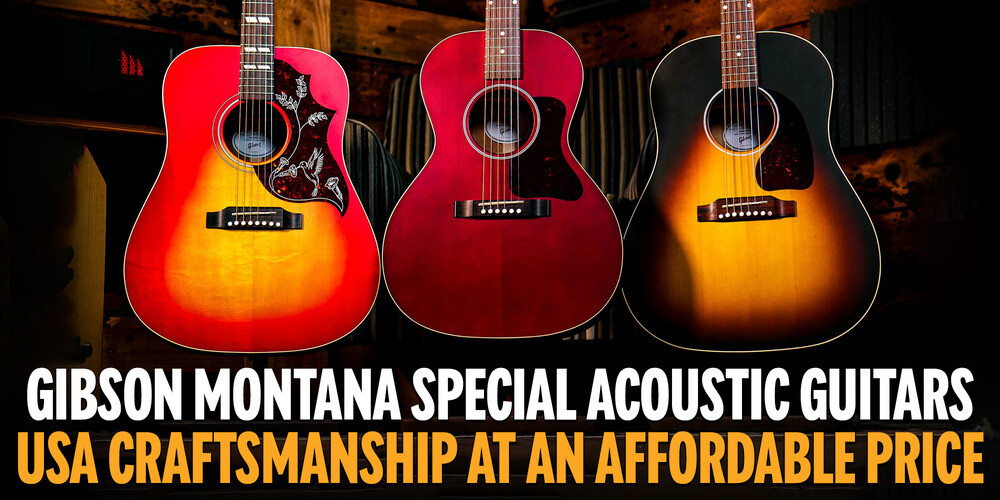
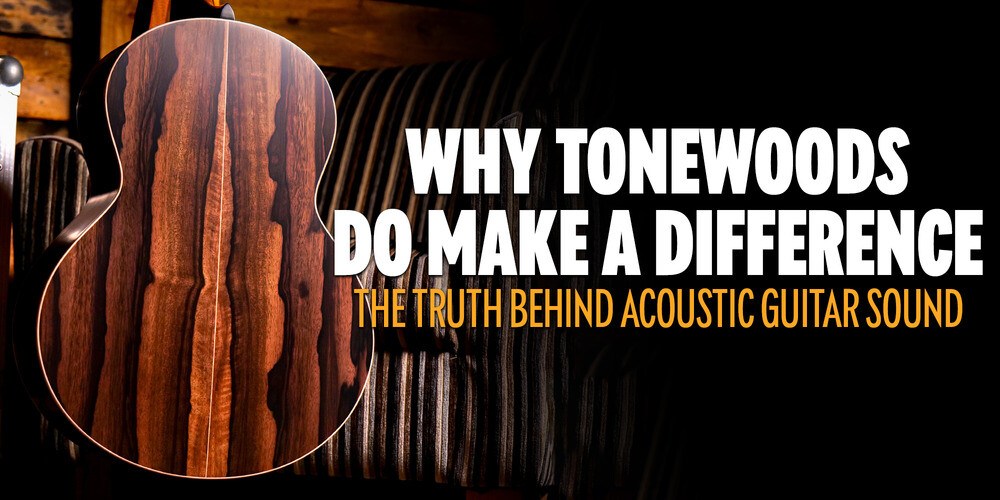
Why Tonewoods Matter: The Truth Behind Acoustic Guitar Sound
Here at Peach Guitars, we’re lucky enough to be surrounded by some of the finest acoustic guitars in the world every day. And one of the most common misconceptions we hear, even from experienced players, is that tonewoods don’t really make a difference. Some think it’s all about the strings, the body shape, or the name on the headstock. But that couldn’t be further from the truth.
Tonewoods are absolutely fundamental to how an acoustic guitar sounds. They shape everything from the warmth of the lows to the sparkle of the highs. They influence the guitar's response, its projection, its resonance, and even how it feels to play. Whether you're a delicate fingerstylist, a flatpicking traditionalist, or a heavy-handed strummer, the woods your guitar is made from play a major role in how it interacts with your playing style.
In this guide, we’ll take a closer look at the major tonewoods used in acoustic guitar construction. We’ve split it into two key sections: the top wood, which acts as the primary resonating surface and sets the tonal foundation of the instrument, and the back and sides, which shape and colour that foundation with their own distinct characteristics. Each species brings something unique to the table, both visually and sonically. And certain builders have become known for the way they use these woods to create signature voices that speak to different kinds of players.
Top Woods: The Voice of the Guitar
The top, also known as the soundboard, is the beating heart of any acoustic guitar. It’s the part of the instrument that does the most to project sound and respond to dynamics. The stiffness, grain, and density of the top wood have a huge impact on clarity, volume, sustain, and tone. Here are some of the most important top woods used in high-end acoustic guitars.
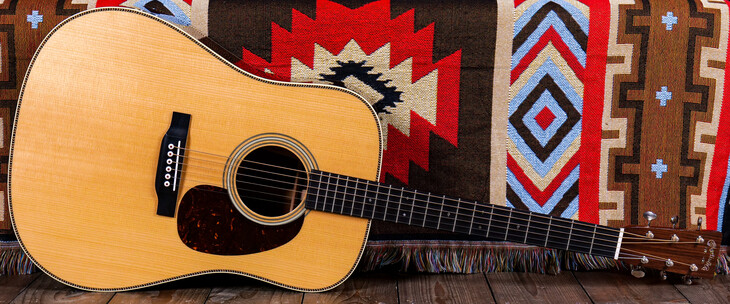
Spruce
Spruce is the most widely used top wood, and for good reason! It offers the ideal balance of strength and responsiveness. It’s light but stiff, allowing it to vibrate easily without compromising structural integrity. The result is a sound that is clear, loud, and articulate, with plenty of headroom. Spruce suits virtually all playing styles, from delicate fingerpicking to hard strumming.
There are several types of spruce you may encounter when purchasing an Acoustic guitar. Sitka spruce is the most traditional and widely available, known for its bright, punchy tone and dynamic versatility. It's found on everything from entry-level Martins to high-end Taylors. Adirondack spruce (also called red spruce) is rarer and more expensive, prized for its power, volume, and headroom, it’s especially loved by bluegrass players and aggressive strummers. Engelmann spruce tends to be a little softer and more responsive at lower volumes, offering a warmer, more complex tone that suits fingerstyle beautifully.
Spruce remains the gold standard for acoustic tops, it's versatile, expressive, and trusted by luthiers and players for generations. If you want a guitar that can do it all, spruce is a safe and inspiring choice.
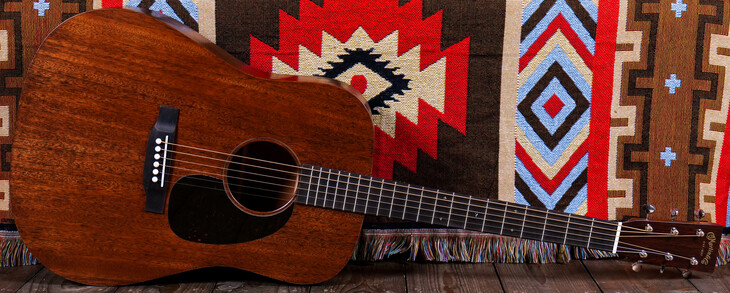
Mahogany
Mahogany tops are less common than spruce, but they have a devoted following. Unlike spruce, mahogany is a hardwood, which gives it a distinctly different tonal character. It tends to produce a warmer, drier, and more mid-focused tone with less overtone content. It doesn’t have the same shimmer or dynamic range as spruce, but what it offers instead is a strong, focused punch that suits blues, roots, and singer-songwriter styles beautifully.
Mahogany-topped guitars have a woody, organic sound that records very well, and they favour a more direct playing style. Brands like Gibson, Martin and Guild have used mahogany tops extensively in classic models aimed at folk and blues players.
For players seeking warmth, character, and a more intimate sound, mahogany tops bring a classic, earthy tone that rewards honest playing and rootsy expression.
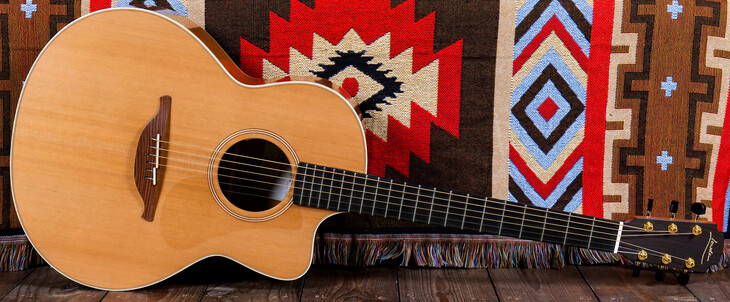
Cedar
Cedar is softer and less dense than spruce, which gives it a quick, sensitive response with a rich, warm tone. It’s especially loved by classical guitar builders, but it’s also common on steel-string guitars aimed at fingerstylists. cedar has a gentle, open sound that responds well to a light touch, we think of it as more intimate and a little less brash than a typical spruce guitar.
Western red cedar is the most commonly used variety, and it imparts a dark, mellow quality that suits intricate arrangements and lyrical expression. It doesn't quite have the headroom of spruce, so it’s not ideal for heavy strumming, but in the right hands, it can produce an exceptionally musical, nuanced tone.
Cedar offers an immediate connection between the player and the instrument. If you value subtlety and musicality over raw volume, cedar could be the perfect match.
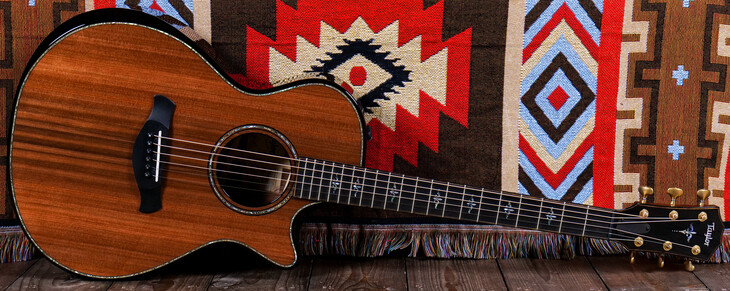
Redwood
Redwood sits somewhere between cedar and spruce in terms of tone and response. It’s softer than spruce but slightly stiffer than cedar, offering a rich harmonic complexity with a warm, responsive feel. It can handle both fingerstyle and strumming reasonably well, making it a versatile option for players who want warmth with presence.
Redwood is often salvaged from old-growth sources, making it a sustainable choice for many boutique builders. Its reddish-brown colouring and fine grain make it a visually striking top wood as well.
Redwood strikes a rare balance between warmth and power. For those after rich overtones with a bold aesthetic, it’s an excellent, boutique-friendly option.
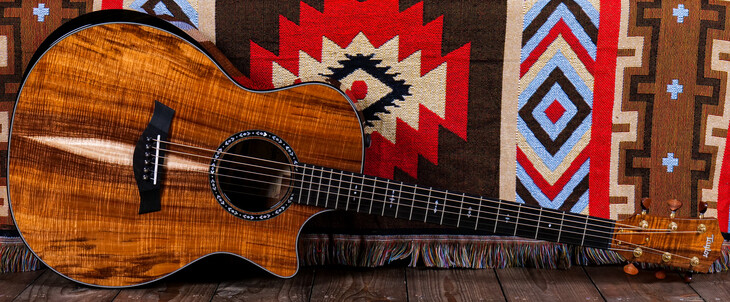
Koa
While Koa is often celebrated for its rich, exotic beauty and use in back and sides, it’s equally captivating when used as a top wood. A koa soundboard brings a unique tonal blend—merging clarity with warmth, and brightness with subtle sweetness. Unlike the familiar sparkle of spruce or the mellow softness of cedar, Koa tops deliver a voice that evolves the more you play.
Early on, Koa-topped guitars may sound tight or even slightly subdued, but with time and regular playing, the wood opens up, revealing a rich midrange and balanced response that’s incredibly rewarding. This tonal evolution makes a Koa top feel personal—like a sound that grows with you.
Visually, it’s nothing short of stunning. Figured koa tops, with their shimmering curls and golden hues, make every guitar one of a kind—not just in sound, but in identity. If you're looking for a tonewood that offers both beauty and a truly personal sonic journey, Koa as a top wood is a remarkable choice.
Back & Sides
While the top wood sets the stage, the back and sides give the guitar its character and colour. These woods don’t directly project the sound, but they reflect and shape the vibrations from the top, adding overtones, sustain, and tonal balance. Choosing the right back and side wood can dramatically influence the guitar’s voice.
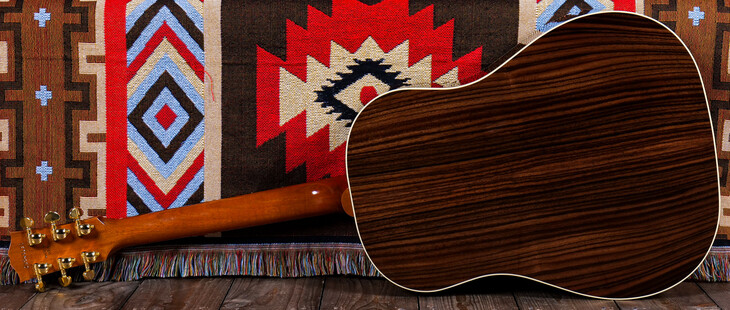
Rosewood
Rosewood is one of the most revered tonewoods for back and sides, known for its lush overtones, rich bass, and sparkling highs. It delivers a complex, three-dimensional tone that many players describe as “piano-like.”
There are several types of rosewood worth noting. East indian rosewood is the most common, offering a strong low end, clear treble, and lots of warmth. It’s used extensively by builders like Martin and Taylor. Brazilian rosewood is legendary for its beauty and tonal depth, though its rarity and expense make it exclusive to real high-end or custom guitars. We've played our fair share of brazilian rosewood guitars over the years, and they certainly live up to the hype! It has a more pronounced, bell-like overtone content and is highly sought after by collectors. Honduran rosewood sits somewhere in between — a bit drier and punchier than Brazilian, but still rich and musical. It's a great choice for those who want something in the middle
Rosewood suits players who want tonal complexity and richness. It’s great for expressive, melodic playing and works well in both fingerstyle and strumming contexts. With its deep lows, sparkling highs, and rich overtones, rosewood remains the benchmark for players who crave depth and dimension in their tone.
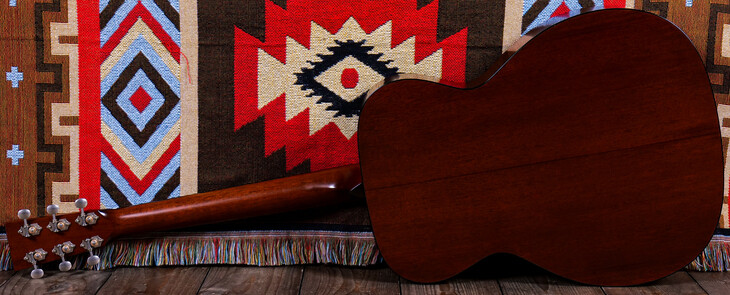
Mahogany
Mahogany back and sides produce an instantly recognisable dry, woody sound with strong midrange presence and minimal overtones. The tone is punchy and focused, with a natural compression that suits recording and live performance. It’s especially popular with blues, folk, and Americana players.
Mahogany doesn’t add a lot of colour, and that’s part of its charm. It allows the top wood and playing style to shine through, making it an honest, transparent choice. Builders like Martin, Gibson, and Collings have long embraced mahogany for its classic, rootsy sound.
Honest, direct, and full of midrange punch, mahogany back and sides are a go-to for traditionalists and those who value a dry, woody voice.
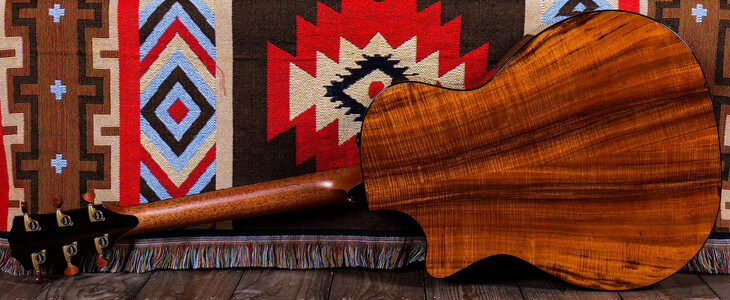
Hawaiian Koa
Koa is a visually stunning Hawaiian tonewood that offers a unique tonal journey. When new, koa guitars tend to sound bright and crisp, almost like maple. But as they age and open up, they develop a warm, rich tone with lovely midrange character and a touch of sparkle.
Koa is perfect for players who want a guitar that evolves over time, and its stunning visuals which often featuring deep curls and flame make it a real favourite for custom builds and limited editions. Our friends at Taylor are one of the most notable brands using high-grade koa in their instruments. You'll find Koa on any Taylor guitar designated with a "K" in its name, like the legendary K24.
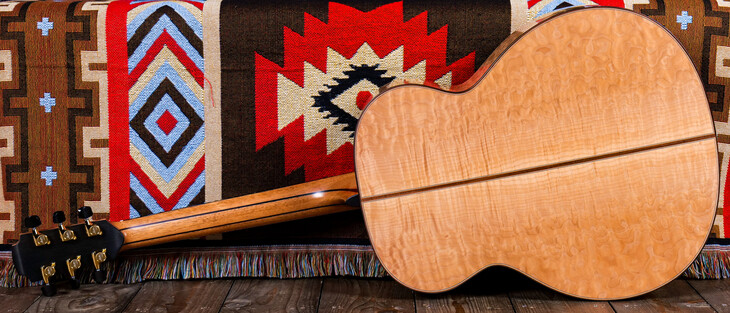
Maple
Maple back and sides are known for their bright, crisp tone and visual beauty. The tone is clean and direct, with excellent note separation and less overtone content than rosewood or mahogany. This makes maple a favourite for stage work, where clarity and feedback resistance are key.
There are several varieties, including flamed maple, quilted maple, and birdseye maple, all of which are visually stunning. Sonically, maple suits players who want precision, projection, and a clear tonal palette.
Bright, punchy, and precise, maple tops are ideal for players who want clarity and control — and they certainly turn heads visually.
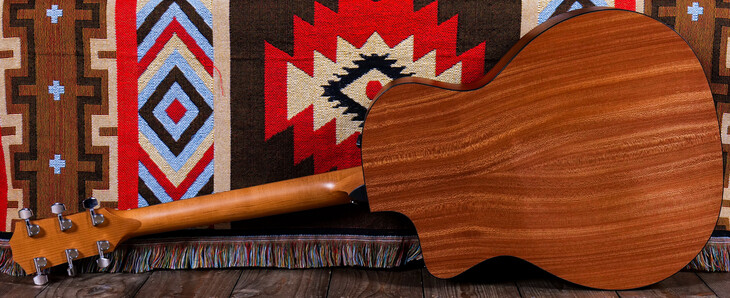
Sapele
Sapele is often used as a sustainable alternative to mahogany, and it shares many of the same tonal properties, like warm mids, controlled bass, and a dry, focused sound. It’s a bit brighter and livelier than traditional mahogany, with slightly more overtone content and a touch more sparkle. You’ll find sapele on many mid-range guitars from brands like Taylor and Faith, offering great tonal value without the price tag of exotic woods.
Sapele delivers great tone and reliability at an accessible price point. Its warm, lively, and a fantastic all-rounder for modern players.
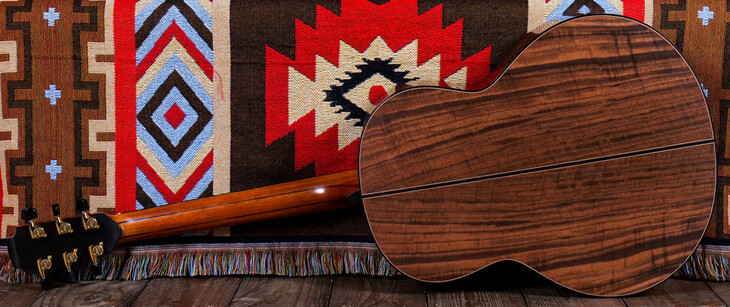
Walnut
Walnut offers a balanced tone that sits comfortably between rosewood and mahogany. It has a strong fundamental, warm mids, and a touch of brightness in the trebles. It’s not as overtone-rich as rosewood, but more complex than mahogany.
Visually, walnut ranges from dark chocolate browns to lighter, streaked grains. It suits players who want warmth and clarity in equal measure, and it tends to age beautifully, both sonically and aesthetically.
Balanced and musical, walnut provides a dependable middle ground. Its clear, warm, and wonderfully consistent across styles.
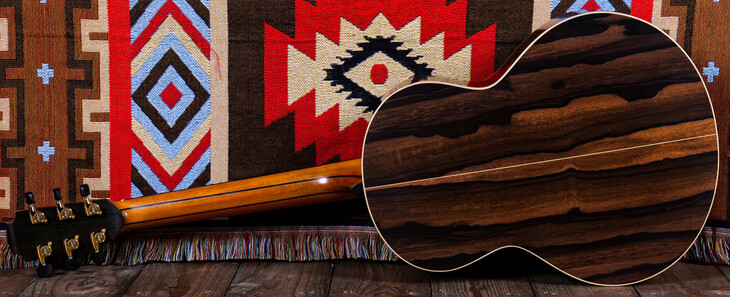
Ebony
Ebony is better known as a fingerboard material, but when used for back and sides, it produces a clear, focused sound with brilliant trebles and tight bass. It’s a dense wood, so it adds a bit of brightness and articulation to the tone, making it ideal for lead players or those who want maximum clarity and definition.
Its jet-black appearance (sometimes with streaks of brown or grey) gives it a dramatic visual appeal. Brands like Taylor have experimented with responsibly sourced striped ebony to stunning effect.
If you’re chasing brilliance, precision, and a touch of luxury, ebony offers a striking voice and a visual flair to match.
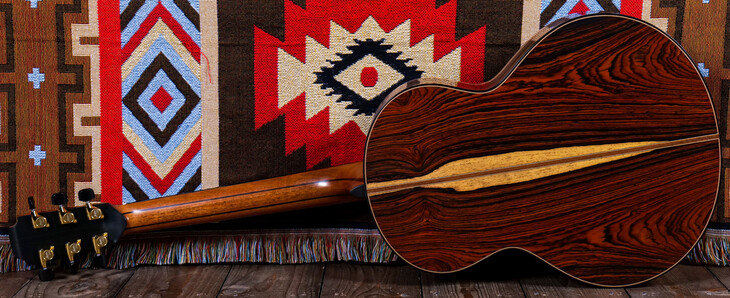
Cocobolo
Cocobolo is a striking tonewood known for its powerful voice and dramatic visual appeal. Tonally, it delivers deep lows, brilliant highs, and long sustain similar to rosewood, but with a touch more midrange presence and a slightly brighter, punchier response. It’s ideal for players who want clarity and richness with a bit more edge.
Visually, cocobolo stands out with vibrant oranges, reds, and dark, swirling grain patterns. Denser and oilier than many other tonewoods, it not only enhances projection but also gives guitars a luxurious, glassy sheen.
If you love the depth of rosewood but want something a little more vivid—in both tone and colour—Cocobolo is a stunning alternative.
Tonewoods: The Biggest Piece of the Puzzle
Tonewoods play a more vital role in your guitar's sound than many players realise. While strings, construction techniques, and body shape all influence tone, it’s the wood that truly gives a guitar its character and soul. By understanding how different tonewoods affect sound, you can make more confident choices and discover the instrument that resonates with your unique voice.
At Peach Guitars, we believe tone is the foundation of the bond between player and instrument. Whether you're inspired by the bright, articulate tones of spruce and rosewood, the rich warmth of mahogany, or the distinctive beauty of koa, we're here to guide you toward the guitar that truly speaks to you.
Visit us in-store or reach out online — we’re always up for a conversation about tone.












